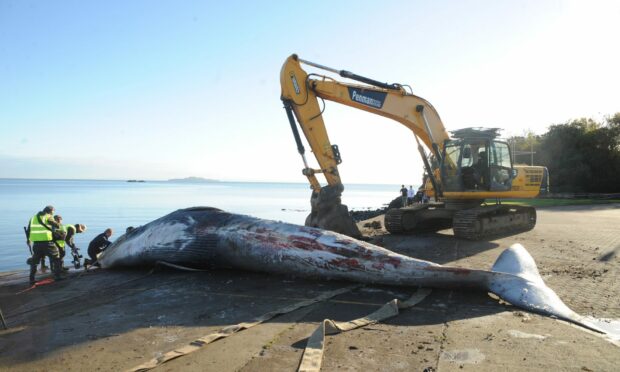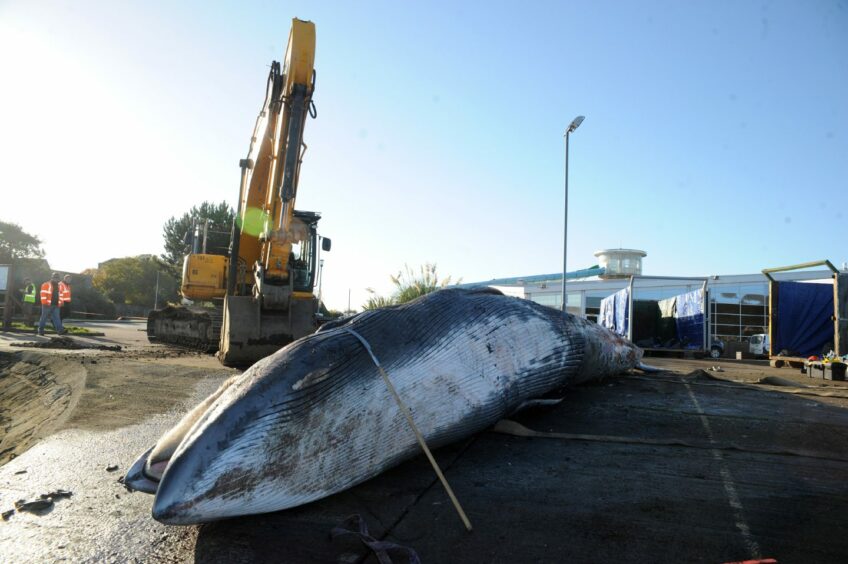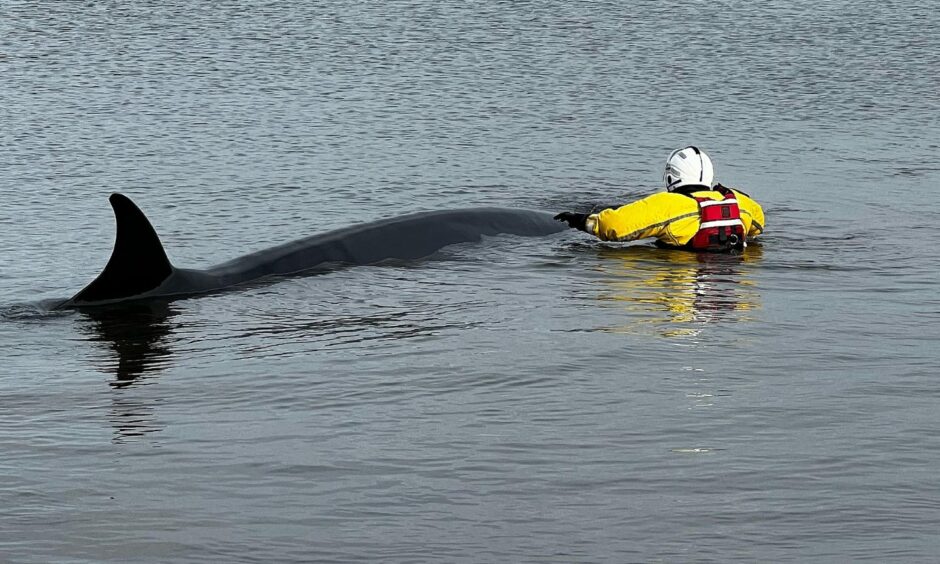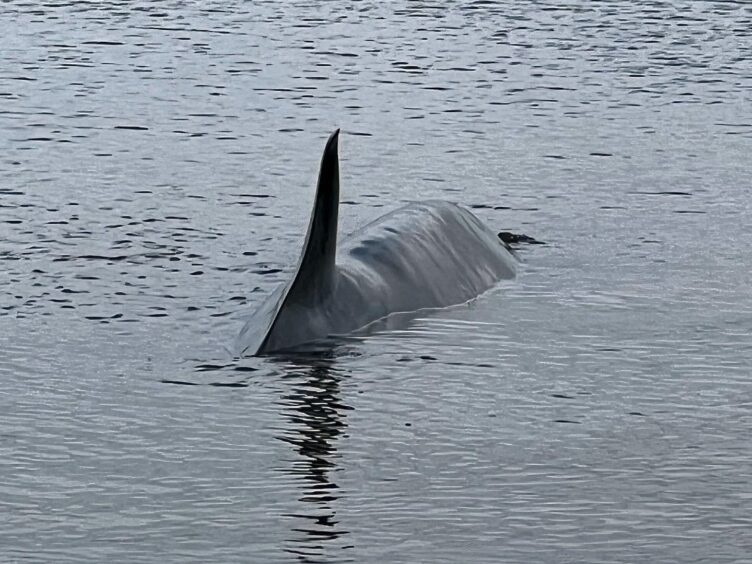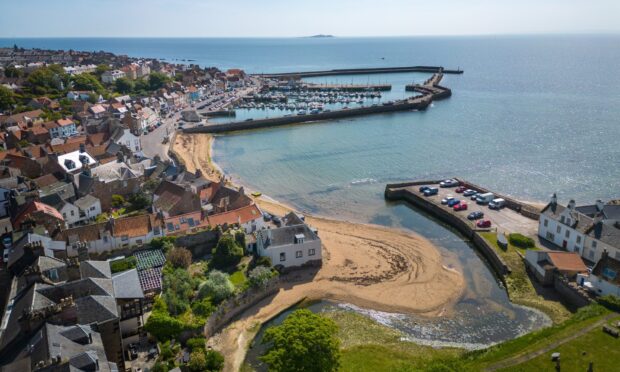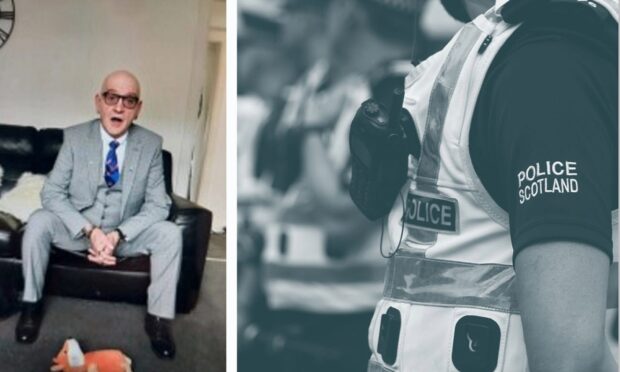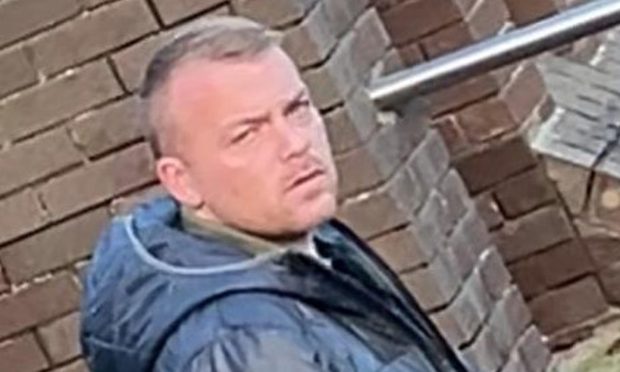A post-mortem carried out on a rare whale that washed up on the Fife coast has revealed the animal hadn’t eaten for several days before its death.
Scientists gathered on Saturday to carry out an examination of the Sei whale, which washed up dead at North Queensferry on Thursday.
The 37ft long adult male was towed by boat from Dalgety Bay to Burntisland in the morning to allow the necropsy to take place.
The Scottish Marine Animal Stranding Scheme (SMASS), which gathers data on the location and cause of death of marine animals throughout Scotland, led the effort.
The British Divers Marine Life Rescue (BDMLR), a charity dedicated to rescuing marine mammals, assisted.
‘Its stomach was empty’
James McKenzie, who is a volunteer sampler for SMASS and also the Fife and Stirlingshire deputy coordinator for BDMLR, was one of those involved.
He said it may take a few more weeks before the exact cause of death is established.
He said: “It had not eaten for a few days because its stomach was empty.
“There was a few parastates within its intestines and — although you do get that in whales anyway — it wouldn’t have helped its state.
“The scientists got all the data they need for sending away to their labs to get the results back.
“There was nothing found massively out-of-the-ordinary.
“There was no pollution such as plastics in the animal or anything like that.”
Whale species one of world’s biggest
Sei whales are one of the fastest whales, reaching up to 30 miles per hour.
They are one of the world’s biggest creatures and the third-largest whale species after blue whales and fin whales.
They have only been spotted in Scotland on a handful of occasions in the last 50 years.
It was initially found stuck in shallow water just off the coast before divers managed successfully free it on Wednesday.
It was then seen to swim freely towards Dalgety Bay and rescuers were optimistic it would survive.
Sadly, the 25 ton creature washed up dead just a day later, close to the original stranding site.
The operation saw an exclusion zone set up in an area around the Burntisland public launch ramp.
The carcass was positioned from the beach on to the car park with the use of a 360-degree 33-ton excavator.
Mr McKenzie added: “The remains have been put into containers for removal to landfill.
“Everything was tidied up on Saturday night when we left and everything went well.”
